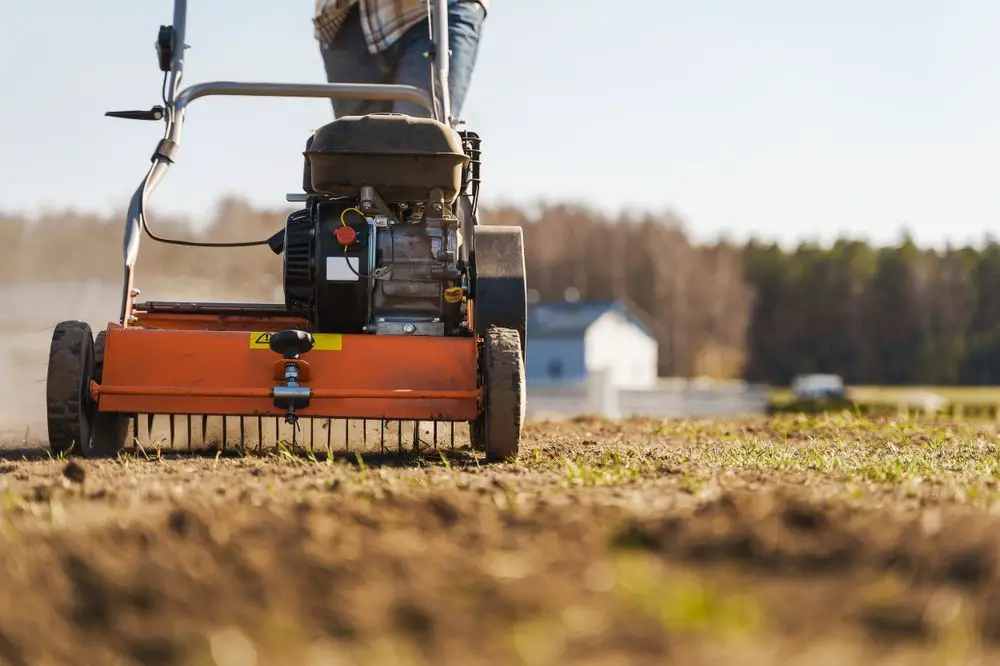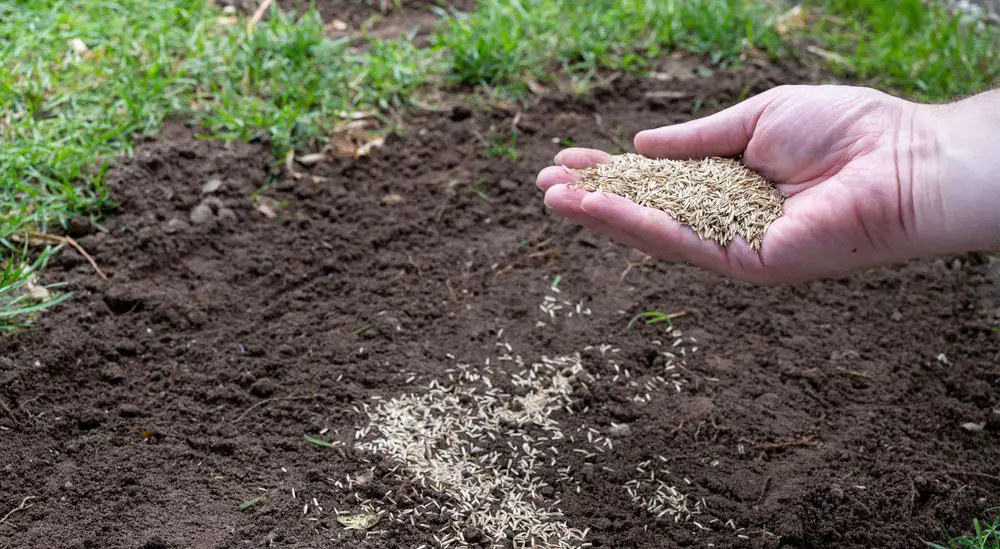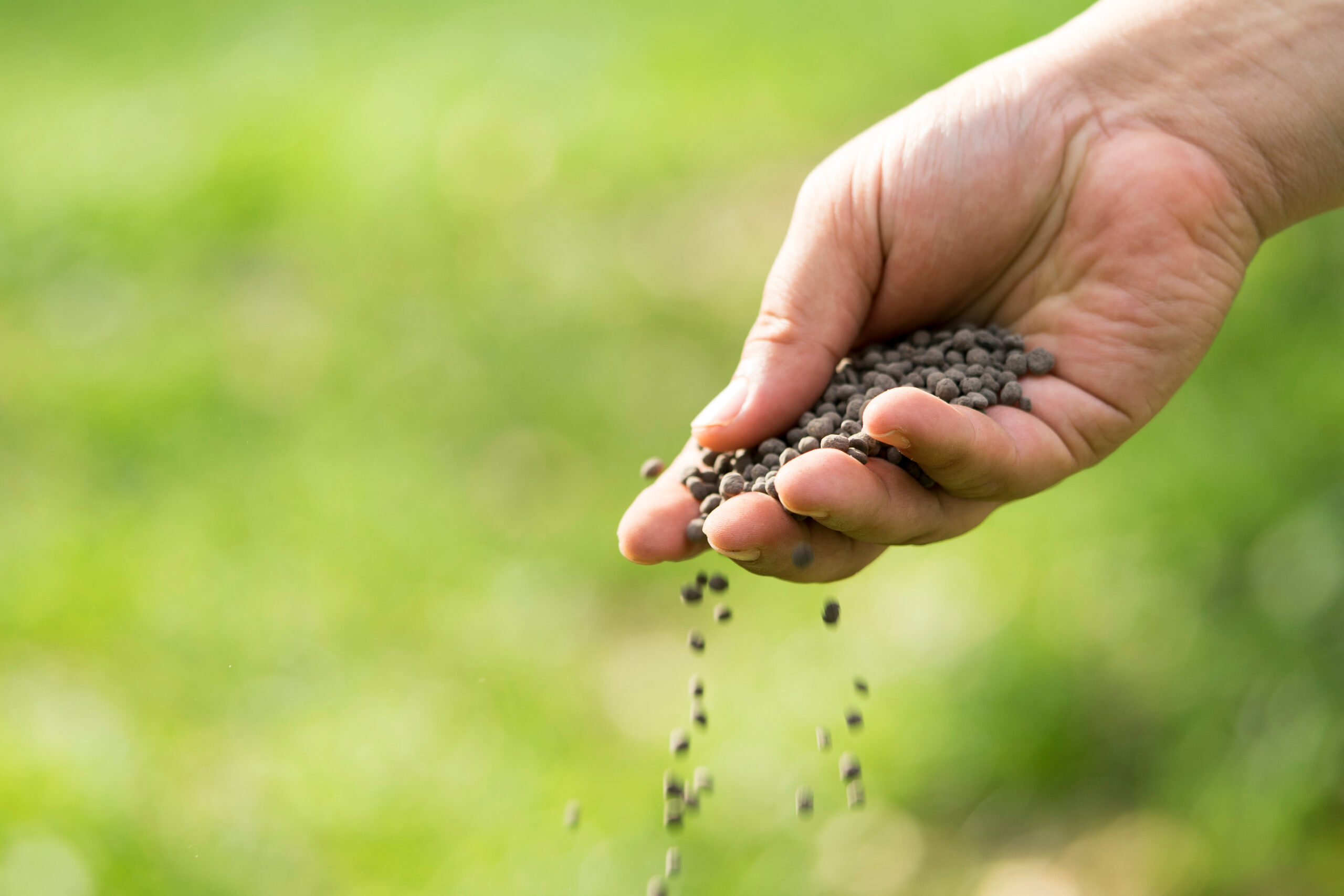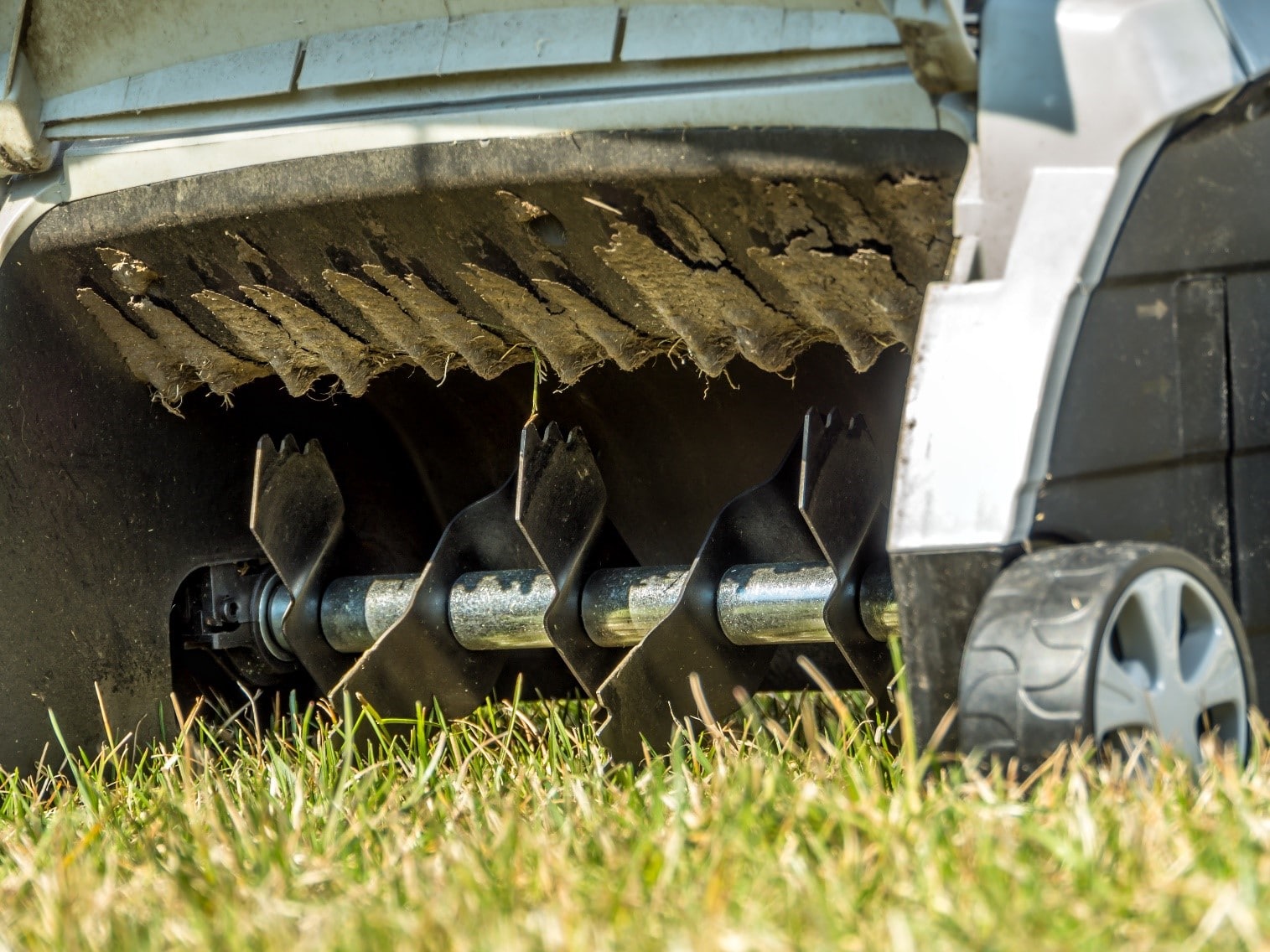Before we get into the details, let’s first clarify what it means to scarify and reseed a lawn.
When To Scarify And Reseed Lawn
The best time to Scarify a lawn is when the grass is almost overgrowing and is thick on the lawn’s surface. The best time to Reseed a lawn is a few days after scarification.
What is Scarification?
Scarification refers to the process of removing thatch and moss from the surface of the lawn.
Therefore, lawn scarification is more of a tedious process than raking or mowing because its purpose is to remove the lawn’s surface and aerate the soil so that nothing can prevent the grass from growing abundantly.
On the other hand, reseeding is a different process from lawn scarification.
The purpose of reseeding is either:
- to keep the appearance of grass growth on the lawn
- to make the grass appear thick and super green
- to cover empty spots in your lawn where grass has previously dried or did not survive.
This article will try to help you become familiar with both methods of when and how to scarify and reseed your lawn.
When To Scarify A Lawn?
Ideally, the best indication of whether or not to scarify your lawn is if its appearance displays a yellow tinge. If so, prep up the scarifier because it’s time to start scarifying your lawn. However, you might find it best to scarify your lawn during late spring and early fall. During this time, the condition of the ground and the weather is perfect for scarification.
You don’t want to scarify during the summer season under the scorching heat.
There is perfect timing to everything — including lawn scarification!
Aside from developing a yellow tinge appearance, most garden experts suggest that it is best to scarify the lawn when the grass is growing fast.
If you scarify the grass during the early stage of its growing period, then you are risking your entire lawn.
The secret is to be patient.
Do not scarify during winter because it will expose the roots of the grass to cold temperatures making it difficult for the grass to recover.
Most importantly, scarification is an extreme and literally ground breaking process for the grass, hence observing good weather conditions to help them recover fast. revolutionary
3 Tips On Scarifying A Lawn
After knowing the perfect period for scarifying a lawn, the next thing you have to remember is how to carefully and successfully scarify the lawn. Below is the list of the tips on scarifying a lawn:
Mow your lawn
Mowing your lawn a week before the date of scarification is a great way to prepare the grass about what is coming towards them. Mowing will help to remove the grass, thatches, and other debris on your grass so that it will take less labor when the scarification date comes.
Scarify when the lawn is moist
It is easier to scarify when the lawn is moderately moist but not soggy. Do not scarify when the lawn is completely wet because you will end up removing the roots. If the lawn is dry on the scheduled date, spray enough water to moisten the lawn.
Apply moss killer
Applying moss killer before the scheduled day will kill the moss so that they won’t be spread all over the lawn when the scarification process begins.
Our Recommendation:
Greenworks 10 Amp 14-Inch Corded Dethatcher, 27022
When To Reseed A Lawn?
Let’s suppose that you just finished scarifying your lawn, and the best thing to do next is reseeding your lawn. Just like lawn scarification, reseeding the lawn has perfect timing.
After lawn scarification, there’s no guarantee that the grass will completely recover. Hence the remedy to that problem is reseeding.
Ideally, the best time to reseed in the North is during the fall season because this is when the soil is still warm, the air is cooler, and there are fewer weeds to compete against.
But in the South, the timing is different, and it is best to reseed during late spring through mid-summer because the grass needs warmer soil to germinate.
It is best to reseed after scarification to keep your lawn filled with healthy and greener grass. Constantly reseed until you achieve the desired grass thickness in your lawn and use the appropriate fertilizer.
Tips On Reseeding A Lawn

Just like lawn scarification, reseeding also has important tips to perfect this process.
Below is the list of tips on reseeding a lawn:
1. Be sure the temperatures are right
There are two types of grass seeds: cool-season and warm-season.
The cool-season grass seeds will germinate if the soil temperature is around 55°F and 65°F.
Warm-season grass seeds will germinate if the soil temperature is around 70°F and 80°F.
2. Get familiar with the seed
You have to know what type of seed you’re working with to know what treatment to apply.
Every grass has a different soil requirement. Hence, knowing and understanding the seed to apply to the lawn will help you learn the necessary adjustments to your lawn.
The best seeds to pick are those with a high percentage of survival, so make sure to ask your provider.
3. Check the pH level of the soil
It’s important to check the pH level of the soil to determine whether or not the soil is acidic for the grass seeds to thrive. Consult your nearest experts to test the acidity of your soil.
4. Clear all the hindrances away
When you reseed, it is best to remove thatch and loosen compacted soil so that the new seeds will not face problems.
After scarification, wait for a couple of days for the lawn to recuperate before you reseed. Then, rake the ground to remove stones, sticks, leaves, and ready the seeds for new seeds.
5. Apply fertilizer
The appropriate fertilizer for grass seeds are light and slow-release fertilizers with phosphorus to help the lawn become established.

6. Irrigate properly
Irrigation is one of the most vital parts of reseeding. It’s essential to keep the soil moist (but not muddy) throughout small irrigations with a frequency of about twice or three times per day.
Final Thoughts on When To Scarify And Reseed Lawn
Scarifying your lawn the right way is important to have healthy and lush looking grass. It’s hard work, however, and you need to have the right tools for the job.
Make sure you wear old shoes – not flip flops – as you’re working with spikey machinery, so you need to protect your feet. Also, wear a pair of suitable water-resistant garden gloves with a decent grip.
You might also need to wear a face mask not to inhale earth dust that the air will blow towards you. But then, everyone wears a face mask these days, so you’re bound to have one available.
Remember, this is not a job of destruction but more of enabling.
You’re simply breaking up the larger clumps of the earth, so they are less compacted and will allow more untroublesome growth for the roots of the grass.
You’re also cleaning up the surface of the grass so that nothing stops that grass from growing.
A few days later, when things have settled down, is a great time to reseed – with the soil all prepped from the scarification, reseeding will enable regrowth, and your lawn will be young and lush again.
My preference for irrigation was only to the point where the soil was damp. Once you get started, you’ll see what I mean.
I hope you take as much pride in your work as I did. There is something so satisfying in watching the rebirth of your luscious lawn and knowing you made it happen.
Read More:
Will Grass Seed Grow If Not Covered?
Why Ironite is Good For Lawns. Plus 6 Tips On How To Use It Correctly
How Many Square Feet are on a Pallet of Sod? +Sod Calculator


